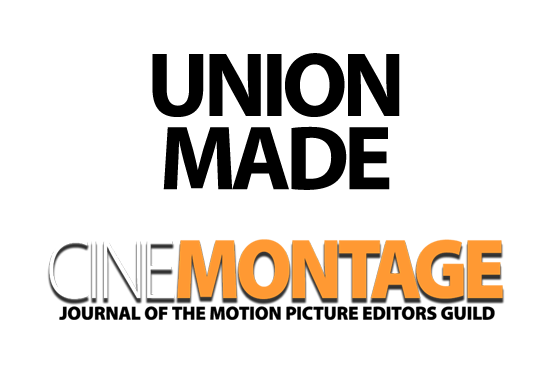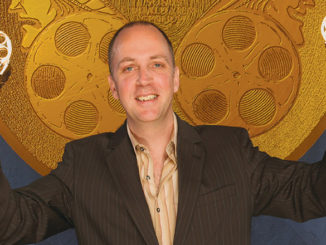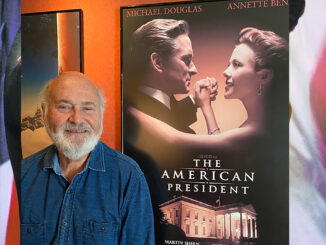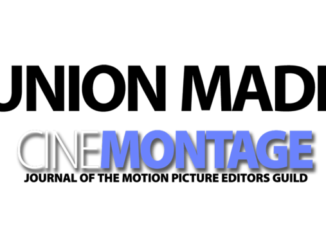
by Rachel Varnell
It all started when I was four years old. I was being forced against my will to eat the most vile of all beans, the dreaded lima. In protest, I made a film starring my cabbage patch dolls to illustrate the grossness of the bean. Okay, you might ask, how does a four-year-old make a movie? With her father as camera operator, of course! I lined up the dolls, instructed my dad to set up our trusty VHS camera, and told him to start rolling.
Sometime in the 1990s when I was about 13, my family went on a short hunting trip to Middle-of-Nowhere, Texas. My friend, my little brother and I were all bored. None of us were particularly interested in hunting, but we loved horror movies and, since this was immediately after the release of Scream 2, we thought, “Why not make our own addition to the trilogy?” We wanted to make it look like someone had been hanged in a closet by our killer, so we had my brother stand on a stool, put ketchup on his mouth, and had him hang on the bar in a closet dangling his feet, shooting just a close-up of the feet with ketchup droplets falling down. Little did I know that this would become my first foray into visual effects!
Because we were on a hunting trip and at a ranch, a variety of odd prop pieces were available to us. We “killed” one of our “victims” by having him lay across a bale of hay and jamming a pitchfork between his arm and side — obviously completely amateur stuff but we had so much fun doing it! Never once did I think this could turn into a lucrative career.
When I finally decided I wanted to major in film, I transferred to a small school in New Mexico that hosted films and had its own sound stages.
I wanted to take my filmmaking up a notch. So in high school I took media classes, in which we got to do a variety of projects, including shooting and editing a news package for the school and music videos. My high school felt very high-tech at the time because we had eMacs with Final Cut Pro 2; both had just come out and were all the rage. This is where I first started using nonlinear editing systems and began to really like editing. I would edit anything I could get my hands on. It was often just junk I shot on my parents mini-DVCAM: friends hanging out after a football game, high school hooligans knocking over port-a-potties, late ’90s whiny alt-rock music.
When it came time for college, I first picked a random Texas university. But when I finally decided I wanted to major in film, I transferred to a small school in New Mexico that hosted films and had its own sound stages. A fellow student was making a music video incorporating a gun massacre. He came up with the ingenious idea to fill an air cannon with faux blood and organs that would explode out, splattering onto the wall behind the character after the gunshot.
No one was willing to rip the cord, fearing he or she would be covered in flying organs and putrescence. No one, that is, except me — I volunteered without hesitation. (I was always willing to do the weird thing in the name of the film.) So I shimmied under the cannon, held tight to the cord and waited for my cue. When the signal came, I ripped the cord and, to my surprise, the “guts” launched against the wall and ricocheted back toward the camera crew; a scream pierced the air as an onlooker was hit with a cow’s liver. I emerged from beneath the cannon completely unsullied. The shot was a complete and total success — and basically made the music video.
On another job on a doc series/reality show, I got the opportunity to cut cold opens and gained enough non-union hours to join the Editors Guild.
During college, editing classes remained my absolute favorite. I would spend hours in our computer lab using FCP and Avid. I also truly enjoyed my animation classes and made brief animations using Adobe After Effects when actors were unavailable.
It seemed natural to keep working my way across the southwest, so after college I packed my bags for Hollywood. My first jobs in the entertainment industry were as production assistants on various projects. Then, after the screenwriters’ strike of 2008, I stumbled into work at a visual effects company, first as a logger before working my way up to visual effects editor. On another job on a doc series/reality show, I got the opportunity to cut cold opens and gained enough non-union hours to join the Editors Guild — a huge goal I’d had since moving to Los Angeles. Since then, I’ve continued working in the field and am currently working as the visual effects assistant editor on an ABC series.
I think the best part about working in visual effects is that the technology is always changing to make the impossible possible. Or at least much easier…and less dangerous.





